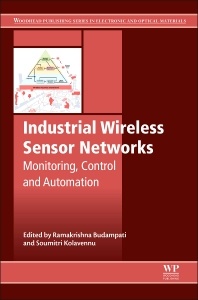Description
Industrial Wireless Sensor Networks
Monitoring, Control and Automation
Woodhead Publishing Series in Electronic and Optical Materials Series
Coordinators: Budampati R, Kolavennu S
Language: English
Subject for Industrial Wireless Sensor Networks:
Support: Print on demand
Description
/li>Contents
/li>Biography
/li>Comment
/li>
Industrial Wireless Sensor Networks: Monitoring, Control and Automation explores the explosive growth that has occurred in the use of wireless sensor networks in a variety of applications during the last few years. As wireless technology can reduce costs, increase productivity, and ease maintenance, the book looks at the progress in standardization efforts regarding reliability, security, performance, power consumption, and integration.
Early sections of the book discuss issues such as media access control (MAC), antenna design and site survey, energy harvesting, and explosion-proof design. Subsequent sections present WSN standards, including ISA100, ZigBee?, Wifi?, WirelessHART? and 6loWPAN, and the applications of WSNs in the oil and gas, chemical, food, and nuclear power industries.
Part I Wireless sensor network technologies and standards
1 Review of wired industrial protocols and application layers
2 Energy harvesting and battery technologies for powering wireless sensor networks
3 Wireless sensor networks for control and automation
4 Wireless sensor network administrative management
5 WirelessHART™ sensor networks
Part II Wireless sensor network applications
6 Wireless networks in underground mines
7 Wireless sensor networks for the monitoring and control of nuclear power plants
8 Wireless gas sensing for life safety
9 Isochronous Wireless Communication System for Industrial Automation
10 A hierarchical wireless sensor network design for monitoring a pipeline infrastructure
11 Shared Spectrum for Industrial Wireless Sensors
S. Kolvaennu is an Engineering fellow at Honeywell, USA.
- Reviews technologies and standards for industrial wireless sensor networks
- Considers particular applications for the technology and their ability to reduce costs, increase productivity, and ease maintenance
- Focuses on industry needs and standardization efforts regarding reliability, security, performance, power consumption, and integration.




